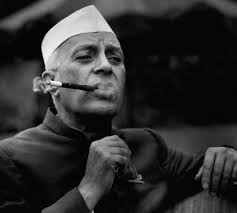Nehru Cost Nepal’s Merger With India
Pranab Mukherjee in his autobiography reveals Jawaharlal Nehru cost Nepal’s merger with India by rejecting the Nepal King Tribhuvan Bir Bikram Shah’s offer to make Nepal a province of India.

Pranab Mukherjee in his autobiography reveals Jawaharlal Nehru cost Nepal’s merger with India by rejecting the Nepal King Tribhuvan Bir Bikram Shah’s offer to make Nepal a province of India.

Jawaharlal Nehru’s blunders effecting India’s security and strategic advantages is just unravelling. Nehru’s mishandling of Kashmir and his decision to go to the UN watered down the significant gains made by Indian army is well known to all. Now there is a sensational disclosure about Nehru’s bungling from the Congress’ own stable from its late veteran leader and ex-President, Pranab Mukherjee (popularly called Pranab Da). In a sensational disclosure, Pranab Da in his yet to be published autobiography titled, “The Presidential Years” has reportedly revealed that how the first Prime Minister of India, Jawaharlal Nehru cost Nepal’s merger with India by rejecting the Nepal King Tribhuvan Bir Bikram Shah’s offer to make Nepal a province of India.
As per reports in the media, in the chapter titled, “My Prime Ministers: Different Styles, Different Temperaments”, Pranab Da wrote that Nehru dealt with Nepal very diplomatically. He notes that Nehru wished for democracy to take root in Nepal. Pranab Da mentions in his autobiography, “Interestingly, Nepal’s king, Tribhuvan Bir Bikram Shah, had suggested to Nehru that Nepal be made a province of India. But Nehru rejected the offer on the grounds that Nepal was an independent nation and must remain so.”
Pranab Da himself in an oblique manner criticises Nehru’s monumental blunder in this matter by opining that, “had Indira Gandhi been in Nehru’s place, she would have perhaps seized upon the opportunity, like she did with Sikkim”. Notably, Sikkim was ruled by a monarch of Chogyal Dynasty in 1975. The Chogyal Dynasty ruled Sikkim from 1642 to 1975. The monarchy in Sikkim was abolished by the Sikkim Parliament on April 9, 1975 and people of Sikkim voted in a referendum to be part of India following which on May 16, 1975, the Indian Parliament passed a resolution under the leadership of the then Prime Minister Indira Gandhi, the 22nd State of India.
Pranab Da further opined about the difference in style of functioning of former Prime Ministers of the Congress party by stating, “Every PM has his or her own style of functioning. Lal Bahadur Shastri took positions that were very different from that of Nehru. There can be divergent perceptions among PMs, even if they happen to come from the same party, on issues such as foreign policy, security and internal administration.”
This memoir by Pranab Mukherjee has again sparked a debate on the debacles of Nehru in areas of foreign policy, diplomacy and geo-physical strategy which effects India’s safety and security even today. Nehru’s decision in matters of Kashmir, Nepal and Tibet has cost India very dearly. Had the Himalyan Kingdom of Nepal and Tibet been absorbed into India it would have served as a buffer against expansionist China and helped the Tibetans to freely follow their culture, traditions, religion and fulfil their political aspirations. The fearless Gorkhas of Nepal and the spiritually oriented Tibetans would have been strength of the larger Sanatani identity of the nation and enriched India. Nehru gifted away to Pakistan many territories to Pakistan and China which were not just large swathes of land but also geo-physical strategic assets to India.
Not only did Nehru not seize the opportunity to merge Nepal with India, he also exported communism and Maoism to India by ensuring the brainwash of Nepalis who came to India for higher studies under the garb of promoting democracy. Nepal is now reeling under political instability and bloodbath due to the Maoist movement in China which was secretly encouraged by the Nehru family in the name of democracy and people’s rule.
Had Gandhi ji respected the wishes of the people of India and let Sardar Patel be the First Prime Minister of India instead of Nehru much of the problems we face today as a legacy of strategic monumental blunders committed by Nehru would not exist as there would have been a continued policy of prioritizing national security and building strategic assets for the country.
DISCLAIMER: The author is solely responsible for the views expressed in this article. The author carries the responsibility for citing and/or licensing of images utilized within the text.
